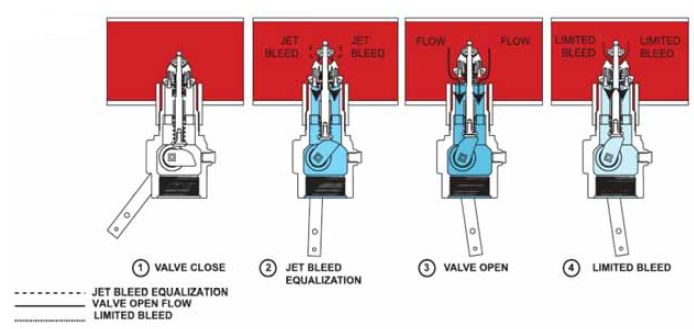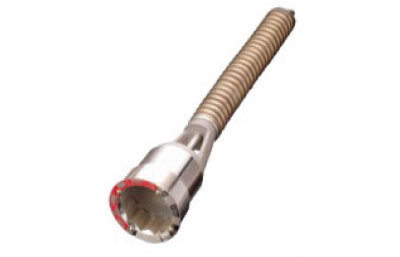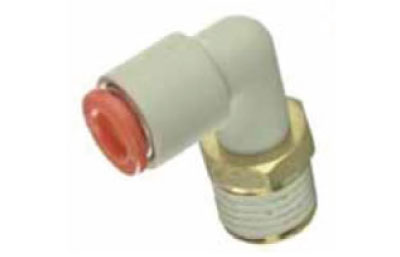Fisher brand internal valves have gained wide field acceptance for use as primary shutoff valves, excess flow valves and back check valves. Internal valves are installed in the inlets and outlets (liquid or vapor) of pressure vessels and in piping systems to control the flow of LPG and Anhydrous Ammonia (NH3). The most frequent application is on bobtail and transport truck tanks, but they may also be used on large stationary storage tanks and on in-line installations. The valves can be used in conjunction with or without pumps and compressors.
Features and Benefits
- Patented rapid equalization bleed area: provides fast valve response for quick opening by moving the flow area away from the stem and allowing it to flow through the poppet. This not only increases flow rate, but also greatly improves valve cycle life which directly improves expected service life.
- Unique serviceability features: removable gland packing, stainless trim parts and poppet designed with integral wrench flat for easy maintenance.
- Durable Design: Stainless poppet and stem interface smoothly for a long wear life.
- Excess Flow Closure: Functions when flow exceeds the valves rated capacity or piping is sheared off at the valve.
- Back check feature: allows reverse flow, fill with or without actuator device in valve open position.
- Spring loaded PTFE stub shaft packing
- PTFE wear pads and Rulon Bushings at critical wear points
- Manual, Cable or Air open/close control
- Thermal Fusible links or plugs melt at 212 to 220F / 100 to 104C and allow valve closure in the event of a fire at the valve.
Principle of Operation
The operational schematic below depicts threaded valves, however flanged styles operate in the same manor. For detailed information, refer to the instruction manual provided with the valve.
View #1
The valve is held closed by both tank pressure and the valves closing spring. There is no leakage past the resilient seats in the poppet to the valve outlet.
View #2
The valve is opened by moving the operating lever to approximately midpoint in its 70° travel. This allows the cam to place the rapid equalization portion of the valve stem in the pilot opening, permitting a larger amount of product to bleed downstream than if the operating lever were moved to the full open position.
View #3
When tank and downstream pressure are nearly equal after a few seconds, the excess flow spring pushes open the main poppet and the operating lever can be moved to the full open position.
if tank pressure is greater than the valves outlet pressure, the main poppet will remain in the closed position. If valve outlet piping is closed off by other valves, however, product bleeding through the pilot will increase until it nearly equals tank pressure and the main poppet opens. The main poppet will not open if valve outlet piping is not closed off so that the outlet pressure can approach tank pressure.
View #4
Once the main poppet opens, a flow greater than the valves excess flow spring rating or a sufficient surge in flow forces the main poppet closed against the excess flow spring. The pilot valve allows a small amount of product to bleed, but much less than view #2 where the rapid equalization portion of the stem is placed in the pilot opening. when the operating lever moved to the closed position, the valve closes completely and seals tightly (view #1).



